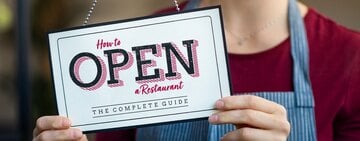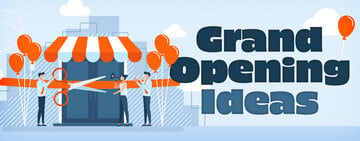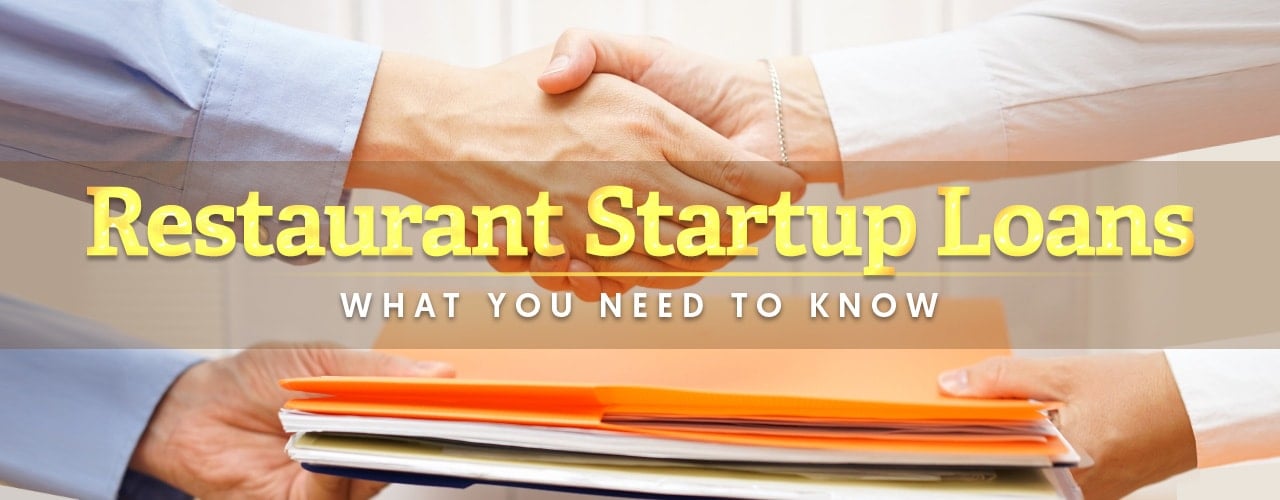
Starting a restaurant is an exciting and rewarding venture, but like any dream, it only becomes a reality with careful planning and sufficient funding. One of the best options for financing a restaurant is a restaurant startup loan, a type of financing specifically designed to help entrepreneurs launch their restaurant businesses. These loans are critical because they can provide the necessary capital to cover expenses such as equipment purchases, leasehold improvements, inventory, marketing, and working capital. Below, we explain the different types of restaurant startup loans so you can choose the best option for your needs.
Types of Restaurant Loans
There are many factors to consider when choosing the best type of restaurant loan, including interest rates, down payments, and collateral requirements. To help you find the right loan for your restaurant startup, check out some of the most popular ones below.
1. Traditional Commercial Loan

Traditional commercial loans, also known as brick-and-mortar loans, are loans from a financial institution that has a physical location including banks and credit unions. If you want to apply for a loan directly through a bank, you must have a high credit score. If you go this route, you must also be able to wait up to six months or more for approval. However, if you are approved for a bank loan, you’ll receive lower interest rates (between 7.85% and 8.79% ) which result in lower monthly payments.
You can also decide whether you want to apply for a short- or long-term loan, but long-term loans aren’t usually ideal for start-ups because there are many unknown factors when you’re first starting out. Another potential downside to term loans is that they require collateral, such as your home, vehicle, or business assets.
Finally, consider where you are getting your loan from. Big banks may have inflexible rules about lending. On the other hand, a smaller lender who knows your local market might be more willing to create an accommodating relationship with you.
Pros of Traditional Commercial Loans:
- Lower rates
- Potential access to higher amounts of capital
Cons of Traditional Commercial Loans:
- Must have a high credit score
- Must be able to wait 3 to 4 months
- Must provide the bank with collateral
How to Apply for a Traditional Commercial Loan
- Choose which bank you want to work with. Talk to representatives from several banks, and don't be afraid to go with a smaller, local bank. They are often better for businesses that are just starting out.
- Prove your personal and/or business credit to the bank.
- Show the bank your business plan. Having a well-written business plan is important to lenders, who need to know exactly what you plan to spend the money on. They will also need to see your expected cash flow over the next 1-3 years, so they can determine whether or not you'll be able to pay the loan back.
- Wait to see if you're approved. If you aren't approved by one bank, try several more. It helps to work with banks that you're already a member of, because some may give you better deals for your loyalty.
2. Business Line of Credit
A line of credit is like a credit card. You can get approved for a specific maximum credit amount, but only pay for what you used. So if you get approved for $100,000 line of credit and only use $20,000 in the first month for renovations, then your monthly payment is based on the amount you have drawn ($20,000 in this case). Also, like a credit card, a line of credit is revolving. As you pay the balance down, you have more credit to draw on for future expenses.
This is different from a term loan, in which interest begins accumulating immediately after the loan is disbursed. Because this is such a flexible way to borrow money, banks have higher lending standards. As a result, interest tends to be higher, and you might not be able to borrow a sum as large as you need. It is important to thoroughly investigate the specific requirements for a lender's business line of credit. For instance, it is common for banks to mandate that a business has been under the current ownership for a specified period.
Pros of Business Lines of Credit:
- Interest only accumulates as you borrow the money
- You can continue to use the credit line as you pay it down, so you always have access to business capital
Cons of Business Lines of Credit:
- Higher lending standards
- Can't usually borrow as much money compared to other loan types
How to Apply for a Business Line of Credit
- Like with a term loan, you’ll start by choosing which bank you want to work with.
- Prove your personal and/or business credit to the bank.
- Show the bank your business plan and expected cash flow over the next 1-3 years.
- Wait to see if you're approved. Once you’re approved, you can draw from the line of credit as needed.
3. Small Business Loan
Most regional and national banks offer small business loan options. The majority of banks offer their small business loans through a partnership with the U.S. Small Business Administration (SBA).
What Is the SBA?

The SBA is a government agency tasked with supporting and protecting the interests of small businesses and business owners. The SBA works with banks and other lenders to help small business startups obtain funding while ensuring the lenders don’t take on too much risk.
The SBA offers several funding programs for small businesses, but their Guaranteed Loan Programs are most pertinent to restaurants. Through these programs, the SBA sets guidelines for loans, which the SBA’s lending partners then give out. SBA guidelines include guaranteed repayment of loans, which eliminates risk for the lender and makes loans more attainable for small business owners.
Individuals with borderline credit (650+) have a better chance of getting approved with a small business loan. Additionally, small business loans have low interest rates, and they allow applicants to cover less than the 20% down payment. However, they usually require collateral.
Pros of Small Business Loans:
- Lower interest rates
- You can be approved with borderline credit
Cons of Small Business Loans:
- Requires collateral
- May take longer to be approved
How to Apply for a Small Business Loan
- Apply for an SBA loan through a participating lender. They have a lender match portal to help you find potential lenders offering competitive rates and fees.
- Complete the specified forms detailing your personal financial background, which will prove your ability to pay the loan back. You will need to submit: personal information for any other partners involved in your restaurant, your original business license (not a copy), any past personal or business loan applications, your personal and business income tax returns, resumes for you and any business partner(s), a copy of your business lease, a copy of your business plan with an explanation of why you need an SBA loan.
- The SBA will process your application and determine if you’re a good candidate for the loan. It usually takes between 30-60 days to hear back.
- If you are approved, you will be contacted and your funds will be disbursed.
Small Business Loans for Restaurants: The 7(a) Loan
The SBA’s most common type of loan, 7(a) loans can be granted in a maximum amount of $5 million and are repaid with monthly payments of principal and interest. Loans may be granted for real estate purchase and renovations, equipment purchase and maintenance, and working capital.
Loans for real estate must be repaid in a maximum of 25 years; equipment loans in 10 years; and working capital loans in 7 years. According to the SBA, to qualify for a 7(a) loan, your restaurant must be:
- A for-profit venture
- Small, according to SBA Standards
- Located in the United States
- Have reasonable invested equity
- Use alternative financial resources (including personal assets) before seeking financial assistance
- Demonstrate a need for loaned funds
- Use the loaned funds for sound business purposes
- Not be delinquent on any existing debt obligations to the U.S. government
4. Restaurant Equipment Financing
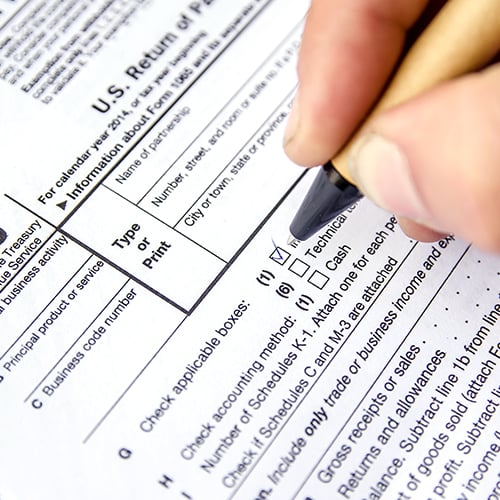
With restaurant equipment financing, the lender provides you with the exact amount needed to purchase the specific piece of equipment required for your restaurant. This means you can acquire essential items such as commercial ovens, refrigeration units, or cooking appliances right away, without having to wait or compromise on quality. One of the key benefits of restaurant equipment financing is that the equipment itself acts as collateral for the loan. If the borrower defaults on the loan, the lender has the right to repossess the equipment as repayment. This arrangement provides security for the lender and may result in more favorable loan terms for the borrower.
One of the key benefits of leasing your restaurant equipment is that it allows restaurant owners to acquire the equipment they need without having to pay the full cost upfront. Instead, the loan is structured in a way that allows the borrower to make regular payments over a set period of time. This helps to alleviate the financial burden of purchasing expensive equipment and allows the business to allocate funds to other areas, such as marketing or employee training. To qualify for restaurant equipment financing, you may need to meet certain criteria. Lenders typically look for businesses with a minimum annual revenue of $130,000 or more. Additionally, a personal credit score of 630 or higher may be required to demonstrate your ability to repay the loan. WebstaurantStore has partnered with Credit Key to offer a competitive equipment financing program.
Pros of Restaurant Equipment Financing:
- Preserves cash flow
- Provides access to high-quality restaurant equipment
Cons of Restaurant Equipment Financing:
- May require collateral
- Longer repayment terms compared to other types of loans
How to Apply for Restaurant Equipment Financing
- Create a comprehensive list of the equipment you require, including their estimated costs.
- Research lenders that specialize in restaurant equipment financing loans. Look for lenders with experience in the industry and a good reputation.
- Prepare a loan proposal that outlines your business plan, the amount of financing you need, and how you plan to use the funds. It should also include a repayment plan, highlighting how you intend to repay the loan.
- After submitting your application, the lender will review it to determine your eligibility. Once approved, carefully review the loan terms and conditions, including interest rates, repayment schedule, and any associated fees.
How to Qualify for a Restaurant Loan
When it comes to securing a restaurant startup loan, lenders consider several factors to determine your eligibility. To increase your chances of qualifying for a loan, it's important to prepare the necessary documents and provide a comprehensive overview of your business plan. By preparing these documents, you can increase your chances of qualifying for a restaurant startup loan. Remember to present your information in a clear and organized manner to make it easier for lenders to assess your eligibility.
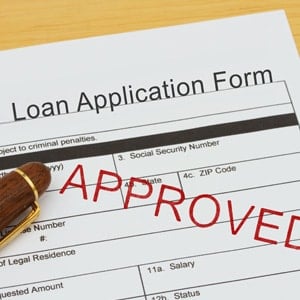
- Loan Application: The first step in qualifying for a restaurant startup loan is to complete a loan application. This application will require you to provide basic information about your business, such as its legal structure, industry, and location. Additionally, you will need to disclose the loan amount you're seeking and provide a detailed explanation of how the funds will be used.
- Business Plan & Overview: A well-crafted business plan should outline your concept, target market, competitive analysis, marketing strategies, and financial projections. It's important to demonstrate to lenders that you have a solid understanding of your industry and a clear plan for success. Your business plan should also include an overview of your management team and their relevant experience.
- Personal Background: Lenders will often assess your personal background to evaluate your ability to manage a restaurant successfully. This includes reviewing your educational background, work experience, and any relevant certifications or licenses. It's important to highlight any industry-specific training or experience you have, as this will demonstrate your commitment and expertise.
- Business Financial Documents: To qualify for a restaurant startup loan, you will need to provide detailed financial documents that show the financial health of your business. This includes profit and loss statements, balance sheets, cash flow statements, and tax returns for the past few years. Lenders will use these documents to assess your business's profitability, liquidity, and ability to repay the loan.
- Ownership & Affiliation Documents: Lenders will also require you to provide ownership and affiliation documents to ensure that your business is legitimate and compliant with regulations. This includes providing copies of your business licenses, permits, and registrations. Additionally, you may need to disclose any affiliations or partnerships you have with other businesses or organizations.
How to Evaluate Restaurant Loans
Not all loans are equally suited for your restaurant, and it is important to evaluate the terms and conditions of each loan option before making a decision. Below, we will discuss key factors to consider when evaluating restaurant startup loans, helping you to make an informed decision for restaurant financing:
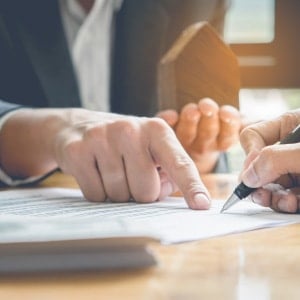
- Payback Amount: The total payback amount includes both the principal amount borrowed and any interest or fees associated with the loan. Understanding the payback amount is essential in determining the overall cost of the loan and its impact on your restaurant's financials.
- Term Length: Consider your restaurant's projected cash flow and financial goals when evaluating the term length of a loan. Longer terms may provide lower monthly payments, but they also mean more interest paid over time. Shorter terms may result in higher monthly payments but allow you to pay off the loan faster.
- Interest: It is important to compare interest rates offered by different lenders. Lower interest rates can save you money over the life of the loan, but they may also come with stricter eligibility criteria.
- Collateral: Lenders may require collateral to mitigate the risk of lending to a new business. Common forms of collateral may include real estate, equipment, inventory, or personal assets. When evaluating loan options, consider whether you are comfortable providing collateral and the potential consequences of defaulting on the loan.
Restaurant startup loans can help entrepreneurs turn their culinary dreams into reality. However, it's crucial to thoroughly research and compare lenders to find the best loan terms for your restaurant’s specific needs. With the right financing in place, you'll be one step closer to opening the doors to your new restaurant and delighting customers with your culinary creations.




